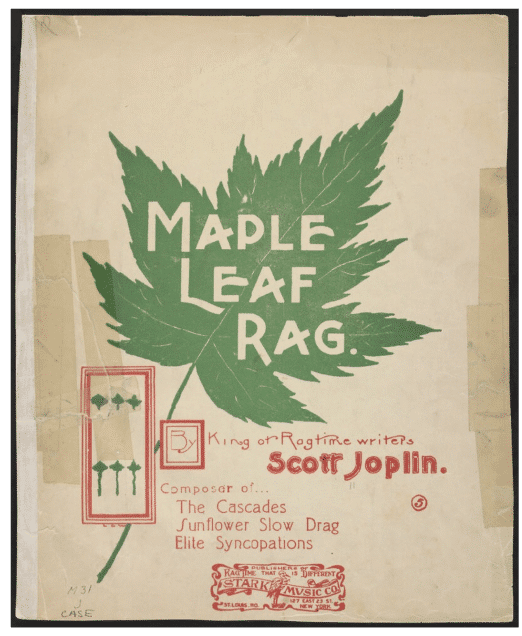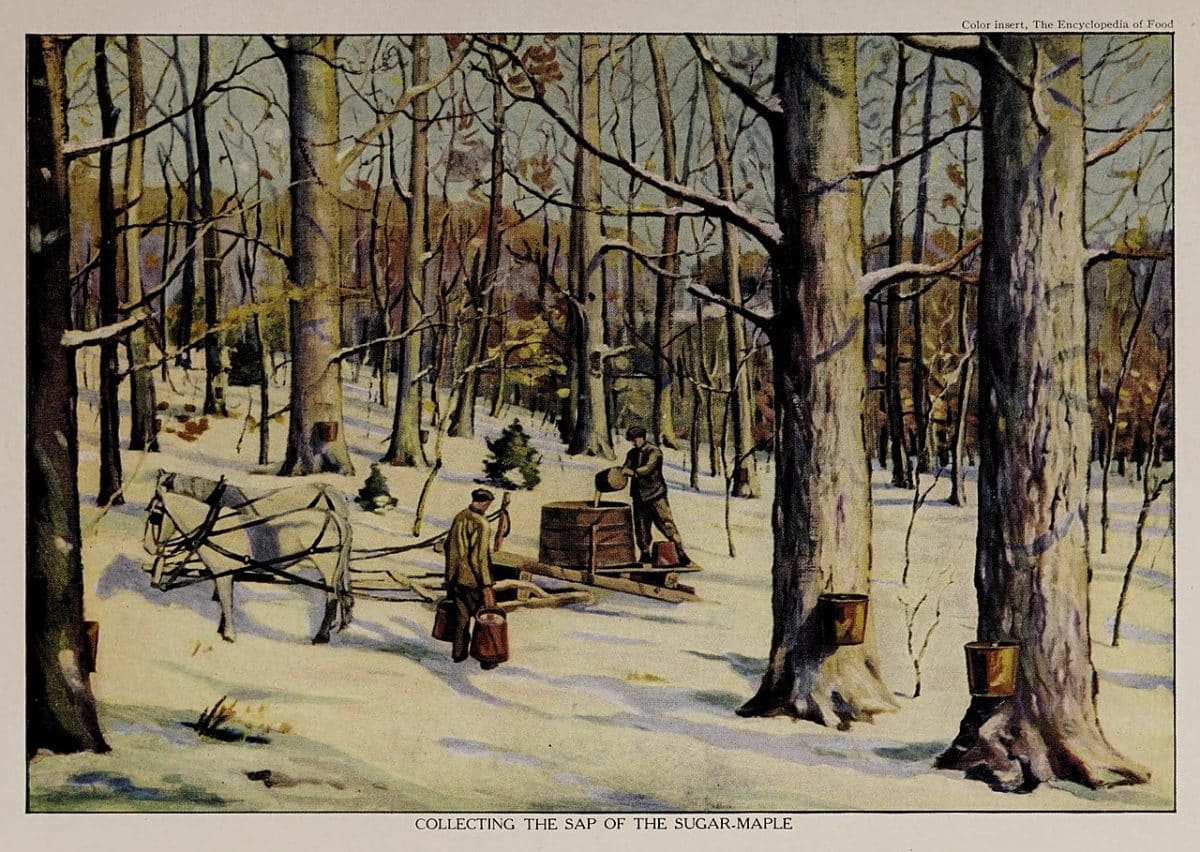Maple syrup is part of North American folklore, history and culture. Take it beyond breakfast.
Maple’s most familiar use is when it’s poured over pancakes or waffles, but this distinctly North American flavor is a unique pleasure in dishes sweet and savory. Try it in a sweet potato bacon casserole, maple pecan ice cream, or plump maple rolls. Make the Maple Walnut Cookies, Maple-Cinnamon Rolls with Maple Frosting, and Easy Maple-Cardamom Salmon with the recipes below.
The traditional method of harvesting sap by tapping a tree through the bark into the phloem, then letting the sap run into a bucket has been somewhat improved over time. But not that much.
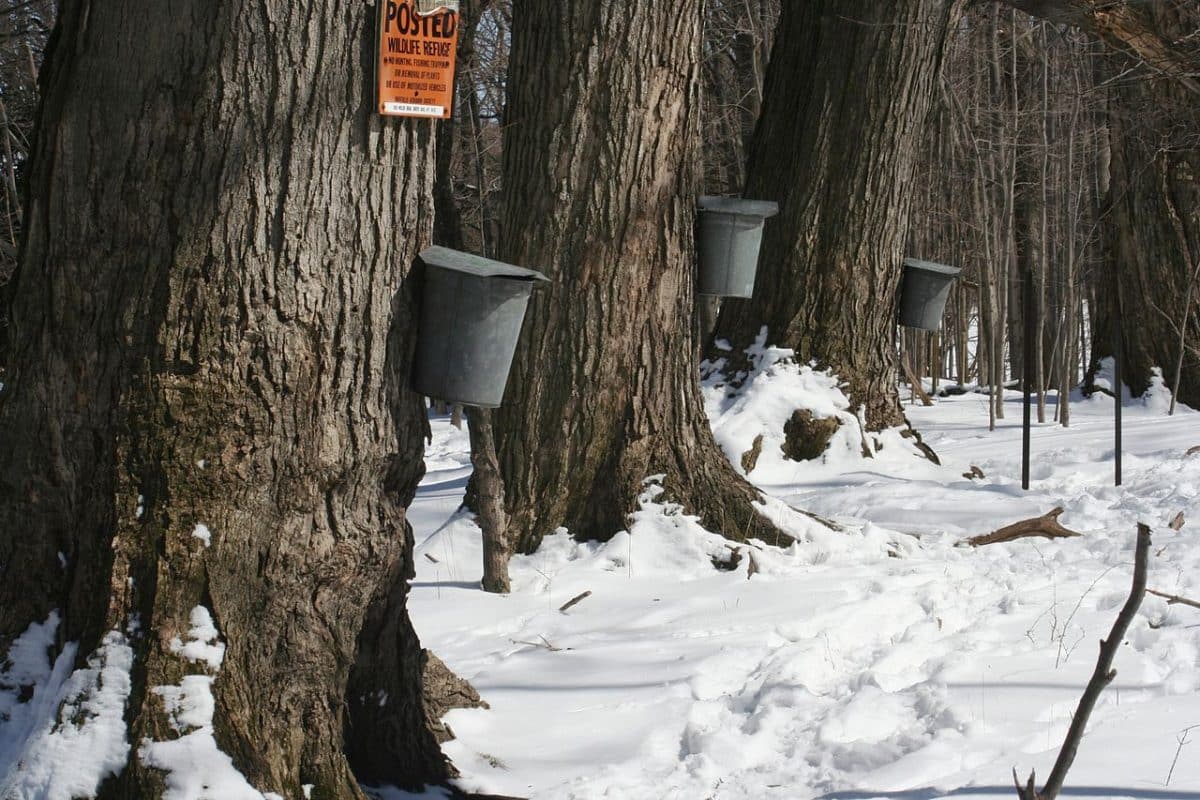
Maple sugaring has been an early spring tradition ever since the Eastern Woodland Native Americans discovered that maple sap cooked over an open fire produces a sweet sugar. These indigenous people would process the sap through the syrup stage to end up with a hard, crystallized sugar. A British Royal Society paper, written in 1685, corroborates the process: “The Savages of Canada, in the time that the sap rises, in the Maple, make an incision in the Tree, by which it runs out; and after they have evaporated eight pounds of the liquor, there remains one pound as sweet sugar.”
According to legend, a French missionary was the first settler to make maple syrup (liquid sugar) in 1690. Others added improvements to the process, boring holes in the maple trunks using wooden or metal spouts. Wooden buckets were used to catch the sap, and the sweet water was transported on shoulder yokes to boiling metal kettles.
Early settlers however, like the Native Americans, saved their maple sap as crystallized sugar. It was, for a time, the only sweetener available. Sugar from cane, a luxury item, was not in common use until the early 1800s. Even then, maple sugar was much less expensive — and thought by many to be tastier — than cane sugar. By this time it was the definition of a cottage industry; tanks on sleds drawn by horses were used to collect the sap and bring it to a purpose-built cabin where it was put in an iron evaporator kettle. A stand of maple trees, then as now, was called a sugar bush; and the sap was processed in a sugar shack or sugar shanty.
Eighty percent of the world’s maple syrup supply is produced in Canada.
Canada’s national symbol is, after all, a maple leaf. In the US, Vermont is the leader (2.5 million gallons), New York (845,000) a distant second, Maine (672,000 gallons), with Wisconsin, Michigan, New Hampshire, Massachusetts, and Pennsylvania in the mix. Maple syrup can be harvested anywhere that the trees and weather conditions permit.
Syrup harvesting and production takes place in February, March and April, when nights are below freezing and the days are warm. The change in temperature from above to below freezing causes water to rush up from the soil during the day and then down as temperatures fall. Aided and abetted by good old gravity, the sap passes the tap holes and flows through spouts into buckets. These days it passes into plastic tubing with a partial vacuum that helps to increase extraction. A flow hole produces sap for only one season. To allow for the natural healing process, new ones must be in different locations each year.
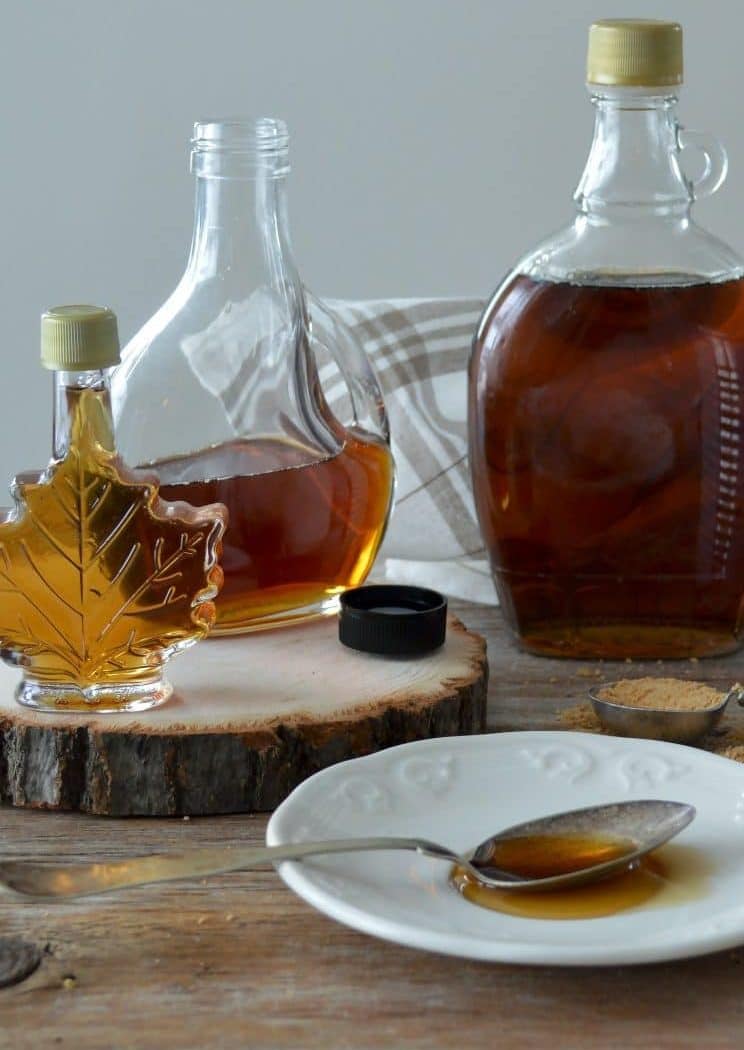
Maple’s most familiar use may be poured over pancakes or waffles, but this distinctly North American flavor is a unique pleasure in dishes sweet and savory.
Similar to the earliest days, the sap is fed from the storage tank to large flat pans to boil down to a syrup. A mature sugar maple produces about 40 liters (10 gallons) of sap during the 4-6 week sugaring season. That 40 liters of sap will end up as one liter of syrup. For the last forty years or so, some syrup producers have used reverse osmosis to remove water from sap before boiling down the sap to syrup. Hard maple sugar is still made, as is maple toffee, maple cream and maple butter — all basically different viscosity levels of maple sap.
Pure maple syrup contains a single ingredient: maple syrup.
Maple syrup is 89% sucrose, with a small portion of glucose and fructose. A tablespoon of maple syrup contains 50 calories (compared with honey at 64 calories and corn syrup’s 60). Maple syrup has 29 grams of carbohydrates, has more calcium than milk by volume, more potassium by weight than bananas, and traces of manganese, magnesium, phosphorous, iron, and thiamin. Maple syrup contains only a negligible amount of sodium and no protein, fat, or cholesterol.
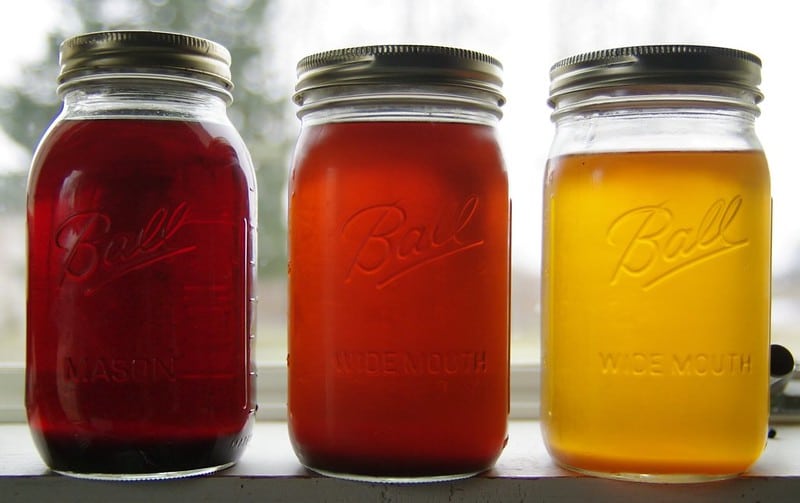
3 batches of Maple Syrup” by astanleyjones
Grades of Maple syrup are:
Grade A – The highest grade divided into Light, Medium, and Dark Amber. The darker the color, the more intense the flavor. In Vermont, the official designation for Grade A Light Amber is Fancy.
Grade B – Dark, strongly flavored syrup with good maple flavor and hints of caramel; generally used for cooking.
Grade C – Commercial grade, very dark, used in commercial cooking, often found in the table syrup blends.
